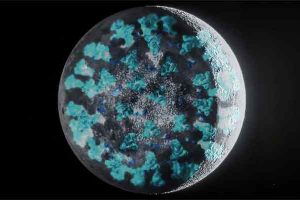
Climate change is ravaging Utah’s Great Salt Lake, with extreme drought leaving its water level at an all-time low, prompting habitat loss and worsening air quality.
Climate change is taking a toll on Utah’s Great Salt Lake, rendering it “a puddle of its former self,” according to a new report published in the Salt Lake Tribune.
Despite still being depicted on most maps in its former glory, the lake has shrunk dramatically and now holds only half as much as its historical average, the paper reported. Utah is one of several Western states experiencing extreme drought conditions that researchers have linked to climate change, and in July the lake’s water level hit a new low.
In the West, water issues have long been a part of the political landscape, and in September, Rep. Blake Moore and Sen. Mitt Romney, both Utah Republicans, introduced legislation to spend $25 million to monitor the water system that feeds the Great Salt Lake.
“Its water levels are at their lowest in recorded history, leading to a loss of habitat, decreased water flows, and air quality issues,” Moore said in a press release. “Unfortunately, saline lakes in Great Basin states are facing these same challenges.”
Climate change is a major driver behind the rate at which the Great Salt Lake is disappearing, but human diversion of tributaries that empty into it has also affected its water level. The result, according to the Salt Lake Tribune, is that more shoreline is now being exposed, threatening the brine shrimp that live in what remains of the lake and the birds that rely on them for food.






